Winners
Get inspired by past finalists and winners of the Amsterdam Science & Innovation Award
2023
Photography by Caren Huygelen, from left to right: Olivier Lugier, Zeliha Guler, Pepijn van Rutten
Olivier Lugier (UvA, category Environment & Climate), developed Nano Hybrids, a more sustainable technology for the production of nanoparticles. These extremely small materials can revolutionize industries with a major social impact, such as sustainable energy. The innovation makes the production of nanoparticles significantly more environmentally friendly.
Zeliha Guler (Amsterdam UMC, category Health), developed an innovative degradable implant for a much more effective treatment of pelvic organ prolapse, with fewer complications. An average of one in four women will experience prolapse. The chance of prolapse increases to 60%, as women get older and have given birth vaginally.
Pepijn van Rutten (VU) from team Respira, are developing the world’s first, sensitive and reliable breath sensor for laughing gas detection. In contrast to alcohol and other drugs, there has not been a good way, until now, for the authorities to detect laughing gas abuse by drivers.
2021
 Tom Brouwer (Amsterdam UMC) won in the category Health with Flowsure, an automated urine production monitor that indicates real-time how much a patient urinates, a vital indicator of the patient’s condition.
Tom Brouwer (Amsterdam UMC) won in the category Health with Flowsure, an automated urine production monitor that indicates real-time how much a patient urinates, a vital indicator of the patient’s condition.
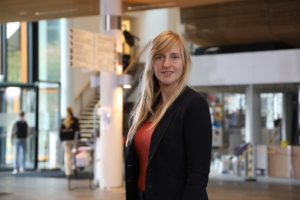 In the category Society, the award went to Desi Bootsman (AUAS) for Mazehunter, a game with which children with dyslexia learn by playing. Mazehunter is developing a digital-physical hybrid game for children diagnosed with dyslexia, that translates innovative dyslexia treatment to an attractive and addictive game environment.
In the category Society, the award went to Desi Bootsman (AUAS) for Mazehunter, a game with which children with dyslexia learn by playing. Mazehunter is developing a digital-physical hybrid game for children diagnosed with dyslexia, that translates innovative dyslexia treatment to an attractive and addictive game environment.
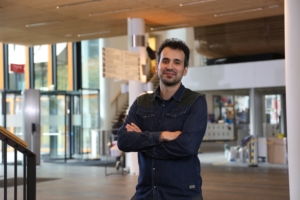
Arnon Lesage (UvA) received the prize in the category Environment & Climate for SolarFoil: a new type of nano foil that converts sunlight into optimal light for more efficient agriculture and horticulture.
2019
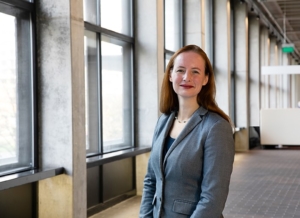 Jill Coster van Voorhout (UvA), Winner category Alpha/ Gamma 2019, received the Award for their innovation of combining various research methods to trace criminal money in bank data. With this innovation, tracking down crimes like human trafficking, money laundering and corruption becomes more effective and secure.
Jill Coster van Voorhout (UvA), Winner category Alpha/ Gamma 2019, received the Award for their innovation of combining various research methods to trace criminal money in bank data. With this innovation, tracking down crimes like human trafficking, money laundering and corruption becomes more effective and secure.
The research team of Marissa de Boer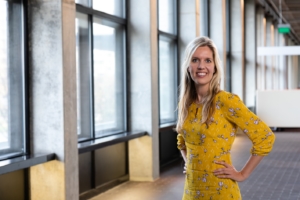 (UvA), Winner category Beta 2019, won the Award with their “SusPhos process”. The team developed a technology that aims to generate a circular phosphate economy by processing phosphate-containing waste into high quality products such as fertilizer and fire retardants.
(UvA), Winner category Beta 2019, won the Award with their “SusPhos process”. The team developed a technology that aims to generate a circular phosphate economy by processing phosphate-containing waste into high quality products such as fertilizer and fire retardants.
The research team of 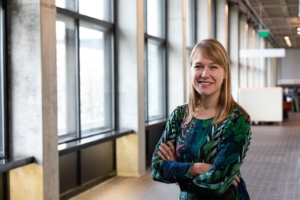 Bernadette de Bakker (Amsterdam UMC), Winner category Life Sciences, won the Award with 3D printed models of embryo’s. The embryo models that are currently used in medical education are outdated, with the customized 3D embryo models, doctors and midwives can better recognize birth defects.
Bernadette de Bakker (Amsterdam UMC), Winner category Life Sciences, won the Award with 3D printed models of embryo’s. The embryo models that are currently used in medical education are outdated, with the customized 3D embryo models, doctors and midwives can better recognize birth defects.
2018
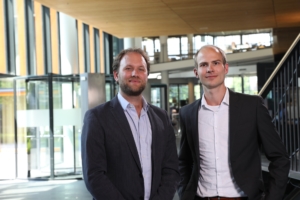 Jonathan Coutinho (Amsterdam UMC) and Wouter Potters (Amsterdam UMC), winners 2018, won the award for their idea to measure the severity of the situation of a stroke patient in the ambulance with a mobile scanner, so he can be transported immediately to the right hospital for the right treatment.
Jonathan Coutinho (Amsterdam UMC) and Wouter Potters (Amsterdam UMC), winners 2018, won the award for their idea to measure the severity of the situation of a stroke patient in the ambulance with a mobile scanner, so he can be transported immediately to the right hospital for the right treatment.
André Baart (VU) 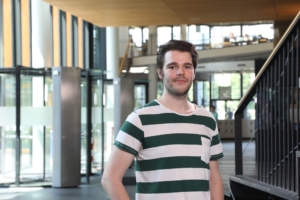 with the project Kasadaka won the High Potential Award in 2018, for the idea to develop simple apps that provide spoken information for illiterate people for telephones in developing countries.
with the project Kasadaka won the High Potential Award in 2018, for the idea to develop simple apps that provide spoken information for illiterate people for telephones in developing countries.
2017
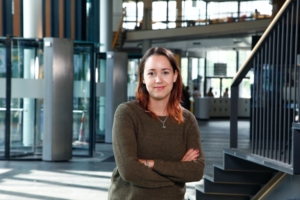 Nathalie de Vent (UvA), winner 2017, received the award for the Advanced Neuropsychological Diagnostics Infrastructure (ANDI), a new online infrastructure for the improvement of neuropsychological diagnostics.
Nathalie de Vent (UvA), winner 2017, received the award for the Advanced Neuropsychological Diagnostics Infrastructure (ANDI), a new online infrastructure for the improvement of neuropsychological diagnostics.
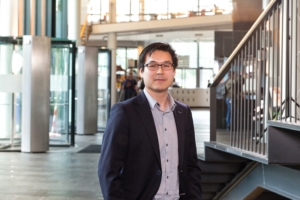 Kenneth Chin (AMC) won the High Potential Award in 2017 for a new optical imaging technique for nerve identification during surgery.
Kenneth Chin (AMC) won the High Potential Award in 2017 for a new optical imaging technique for nerve identification during surgery.
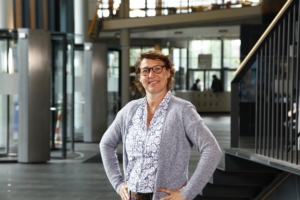 Juultje Sommers (AMC) and Marike van der Schaaf (AMC and HvA) won the Audience Award in 2017 for the ICU Mill: a mobile, simple and safe solution for rehabilitation of patients on Intensive Care.
Juultje Sommers (AMC) and Marike van der Schaaf (AMC and HvA) won the Audience Award in 2017 for the ICU Mill: a mobile, simple and safe solution for rehabilitation of patients on Intensive Care.
2016
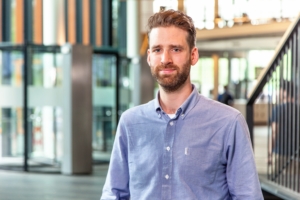 Bram Schermers (NCI/ AvL) winner of 2016 for his entry “MaMaLoc, a technique for the improvement of the breast cancer treatment”.
Bram Schermers (NCI/ AvL) winner of 2016 for his entry “MaMaLoc, a technique for the improvement of the breast cancer treatment”.
Marte Otten, 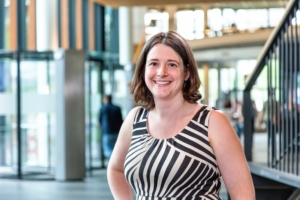 (UvA) won the high potential award in 2016 for her “Feeling thermometer”, an online application for visualization of unconscious beliefs.
(UvA) won the high potential award in 2016 for her “Feeling thermometer”, an online application for visualization of unconscious beliefs.
2015
Paul Govaerts and Martine Coene of the VU were the winners of 2015 for their idea to restore hearing using cochlear implant programming.
Nick Laan and Karla de Bruin of the UvA won in 2015 the Runner Up prize together with the Netherlands Forensic Institute for their innovative work to improve bloodstain pattern analysis in forensics.
The Audience Award in 2015 was won by Jurre den Haan and Femke Bouwman of the VU University’s Alzheimer’s Centre in collaboration with LaserLab Amsterdam for a technique for early diagnosis of Alzheimer’s disease.
2014
Giulia de Luca, Ronald Breedijk and Erik Manders (UvA) won the Amsterdam Science & Innovation Award with their re-scan confocal microscopy (RCM) to be able to see cells sharper.
Kevin Kesteloo (student of HvA) of Supreme Dutch was honourably mentioned in 2014 with his ‘Indestructible bicycle tire’; a bicycle tire that lasts for years and can be mounted on all types of wheel rims.

AmSIA 2023 Aftermovie & live recording in full
In 2023, for the 16th time, the AmSIA has taken place at NEMO Science Museum! It was a dazzling event in which 9 finalists took the stage to pitch their innovative ideas. An expert jury awarded three winners, Zeliha Guler (Amsterdam UMC), Pepijn van Rutten (VU) and Olivier Lugier (UvA) with an Innovation Award. Three […]
News
Amsterdamse Impact Awards voor radioactieve TomTom, wiskundige optimalisatie en essentiële schimmels
Onderzoekers Guus van Dongen, Dick den Hertog en Toby Kiers krijgen de Impact Award 2023. Deze wordt uitgereikt aan gerenommeerde onderzoekers die een betekenisvolle bijdrage leveren aan de maatschappij. Er zijn drie categorieën: Gezondheid, Maatschappij en Milieu & Klimaat. Categorie Gezondheid: Guus van Dongen, hoogleraar medische beeldvorming en biomarkers bij Amsterdam UMC, ontwikkelde nieuwe beeldvormende […]
News
Innovation Awards 2023 voor implantaat tegen bekkenbodemverzakking, test voor lachgasgebruik en duurzamere productie van nanodeeltjes
The Innovation Awards were presented for the 16th time at NEMO Science Museum, to Zeliha Guler, Pepijn van Rutten and Olivier Lugier.
News
